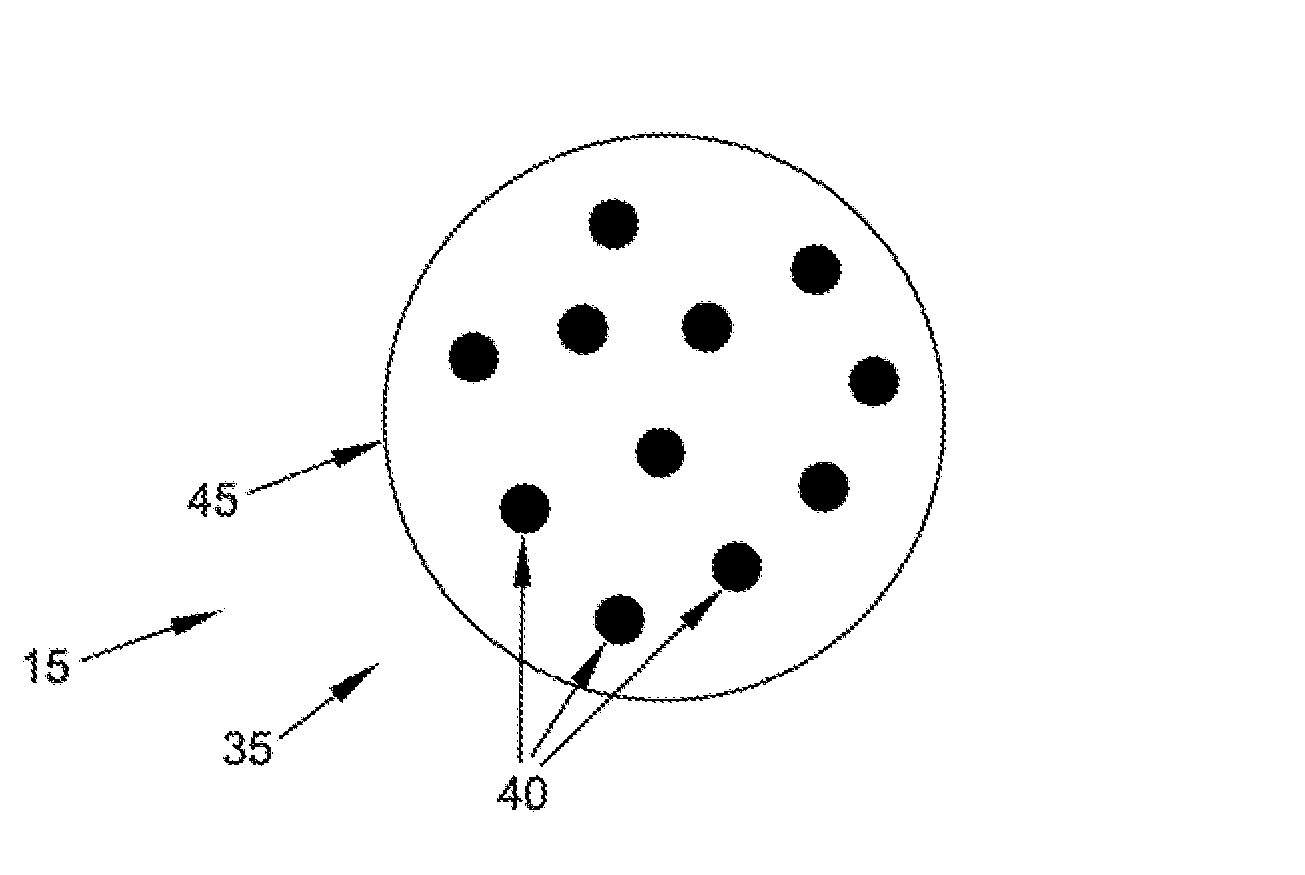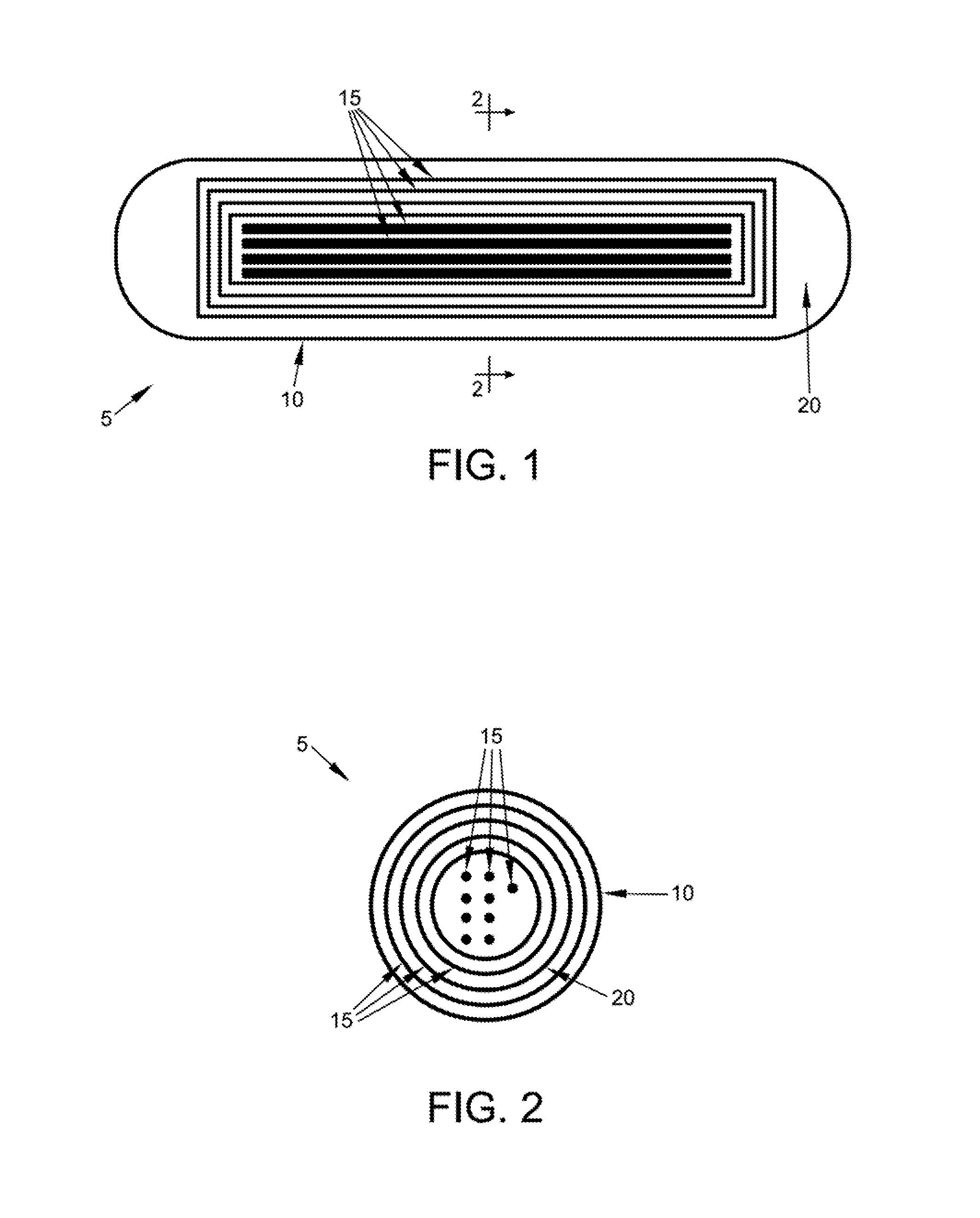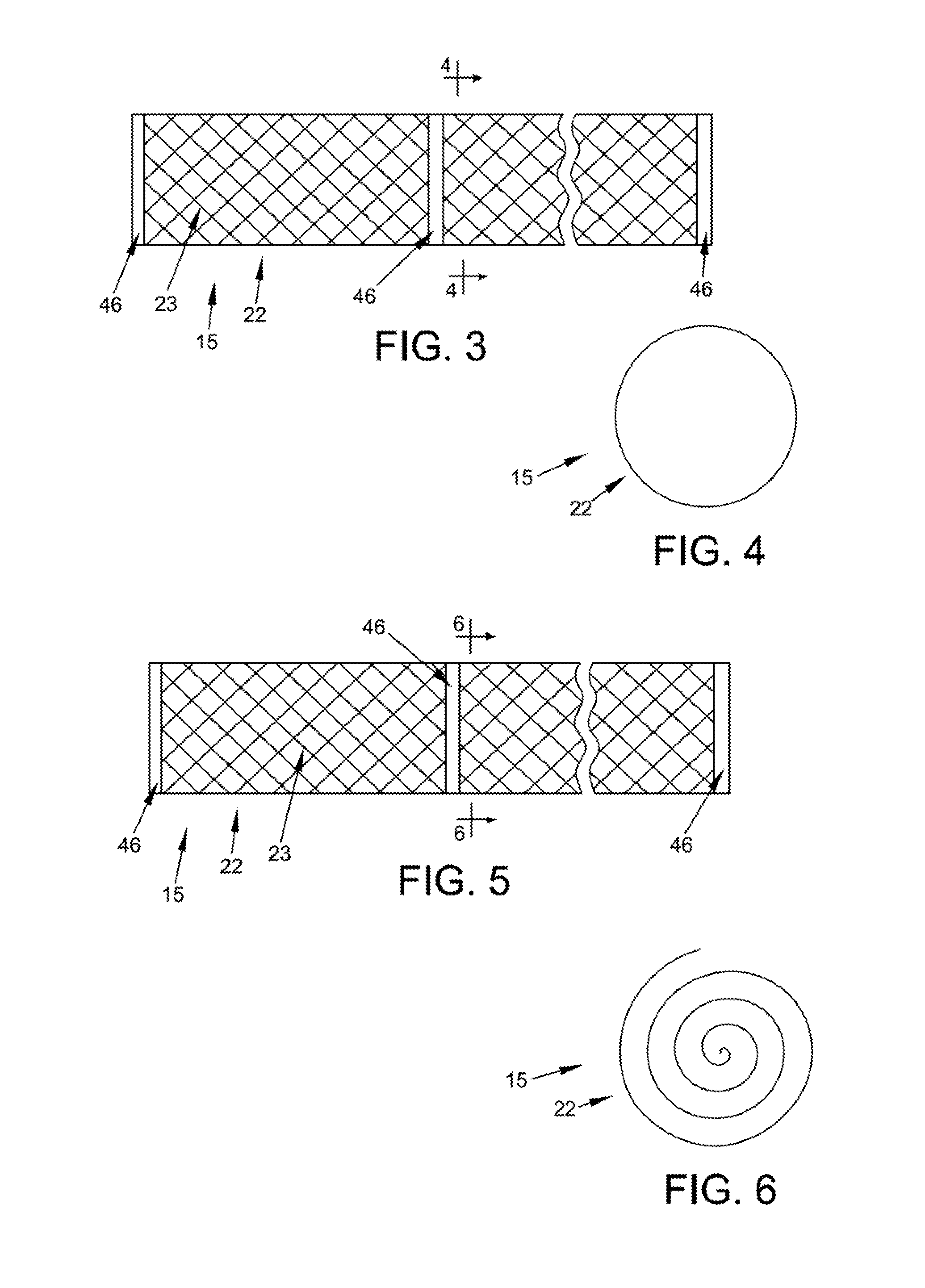Method and apparatus for treating bone fractures, and/or for fortifying and/or augmenting bone, including the provision and use of composite implants
a bone fracture and bone technology, applied in the field of bone fracture treatment methods and equipment, can solve the problems of affecting the normal daily activities of patients, affecting the effect of load transfer, and difficult external casting and bracing of some fractures, so as to improve the visibility, minimize the inconvenience of patients, and enhance the effect of bone augmentation
- Summary
- Abstract
- Description
- Claims
- Application Information
AI Technical Summary
Benefits of technology
Problems solved by technology
Method used
Image
Examples
example 1
[0121]Preparation of 50 / 50 prepolymer: 10.60 g polycaprolactone diol (0.02 mol), 6.00 g polycaprolactone triol (0.02 mol), both previously vacuum dried and 23.31 mL isophorone diisocyanate (0.10 mol) were stirred continuously while heating slowly to 70° C., and then stirred at 70° C. for 2 hours. The heat and stirring was stopped and the reaction was allowed to sit at room temperature overnight. Yield ˜40 g clear highly viscous material.
example 2
[0122]Preparation of 60 / 40 prepolymer: 15.90 g polycaprolactone diol (0.03 mol), 6.00 g polycaprolactone triol (0.02 mol), both previously vacuum dried and 27.97 mL isophorone diisocyanate (0.13 mol) were stirred continuously while heating slowly to 70° C., and then stirred at 70° C. for 2 hours. The heat and stirring was stopped and the reaction was allowed to sit at room temperature overnight. Yield ˜50 g clear viscous material.
example 3
[0123]Preparation of hexamethylenediamine aspartic acid ester: 11.62 g hexamethylenediamine (0.10 mol) and 38.86 g tert-butanol was combined, and 34.46 g diethyl maleate (0.20 mol) was added slowly. Reaction was N2 blanketed and heated to 70° C. with stifling for 30 minutes. Reaction was allowed to sit at room temperature for 120 hours before removing tert-butanol via rotary evaporation at 70° C. and 215-195 mbar. Yield ˜45 mL clear slightly viscous liquid.
PUM
| Property | Measurement | Unit |
|---|---|---|
| angle | aaaaa | aaaaa |
| angle | aaaaa | aaaaa |
| mean diameters | aaaaa | aaaaa |
Abstract
Description
Claims
Application Information
 Login to View More
Login to View More - R&D
- Intellectual Property
- Life Sciences
- Materials
- Tech Scout
- Unparalleled Data Quality
- Higher Quality Content
- 60% Fewer Hallucinations
Browse by: Latest US Patents, China's latest patents, Technical Efficacy Thesaurus, Application Domain, Technology Topic, Popular Technical Reports.
© 2025 PatSnap. All rights reserved.Legal|Privacy policy|Modern Slavery Act Transparency Statement|Sitemap|About US| Contact US: help@patsnap.com



